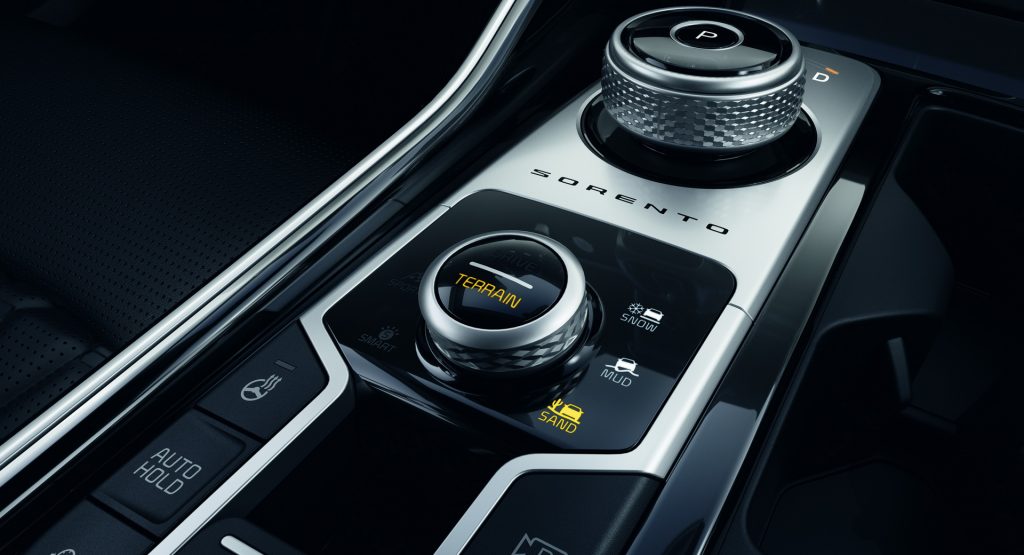KIA’s latest Sorento will offer European buyers a newly-developed ‘Terrain Mode’ once EU sales kick off in the second half of this year.
Terrain Mode is said to offer better traction, stability and control on different types of surfaces such as mud, snow or sand, featuring dedicated new driver modes for each scenario. As such, all-wheel drive variants of the new Sorento should prove more capable than ever before.
Shifting through the different modes is as easy as operating the Select dial on the center console. The system then automatically optimizes the drivetrain to suit each surface, adjusting engine torque output and distribution, shift timings, as well as the characteristics of the vehicle’s stability control.
Watch: Here’s How The 2021 Kia Sorento’s Clever Blind-Spot View Monitor Works
In Snow Mode, the Sorento’s torque output is limited, while being spread out as equally as possible between all four wheels. Meanwhile the traction control system (TCS) applies low levels of braking force to the wheels to optimize traction, and the transmission uses shorter shifts to prevent wheel slip.
In Mud Mode, the wheels are driven based on a slightly delayed shift pattern and a smoother application of torque, whereas Sand Mode makes sure to match higher levels of torque with delayed up-shifts to keep the vehicle from getting bogged down.
“The Sorento has always been a highly capable vehicle, and the new model demonstrates how Kia has evolved the car for the modern era. The first-generation Sorento, launched in 2003, paired all-wheel drive with a robust body-on-frame chassis, making it a solid performer in all conditions. 17 years on, the fourth-generation model uses advanced drivetrain technology to enhance its abilities further,” said KIA Motors Europe exec, Pablo Martinez Masip.
“The Sorento is now more capable than ever, and is designed to provide drivers with greater confidence and control at the wheel. The new model combines intelligent all-wheel drive and a strong monocoque chassis with new Terrain Mode functionality. It’s therefore quicker to react to changing conditions, and lets drivers enjoy more effortless progress.”



